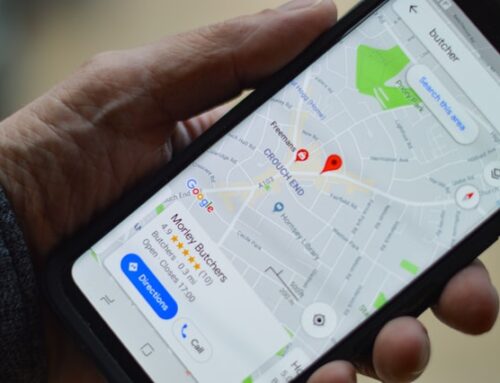
What is the Difference Between – Branding and Marketing?
Author : Hardeep Singh
June 7, 2025
Many people believe there is no difference between marketing and branding. That there are few, if any, differences between them, and that the immature eye cannot notice them. Regardless, given the current market, it has never been more important for businesses and entrepreneurs to clarify the branding versus marketing issue.
With so many new companies entering the commercial sector and so many avenues to target clients, firms must constantly bring their A-game to the table to stay ahead.
In the face of fierce competition, communication is critical, and marketing and branding are the keys to outstanding communication. Given that you understand what motivates each of them.
Continue reading to learn the distinction between branding and marketing and how they may help you get visibility and grow your business.
What is Branding?
As the name implies, branding is concerned with your brand. From its logo to its message, “attitude,” ideals, and unique selling recommendation. The brand is the way you define your business. Branding may be as constant as you wearing a tailored suit to a business lunch with corporate directors since that is what is expected in that scenario. However, it might be just as surprising as wearing shorts to a comparable event because it is your identity.
Everything revolves around the message you’re sending and the elements that set your company apart.
There is a common misconception that branding is limited to the colours of your logo or the layout of your website. Branding is about much more than that. It is the method through which you appeal to your target audience. It is the personal connection you form with your clientele.
Think about Mercedes. Everything about their image screams trustworthiness, luxuriousness, and choice. You won’t discover their information or image straying from that by doing things like promoting another S-class model sporting a pink elephant tank top. Mercedes’ branding is entirely concentrated on the organisation’s work of art and beautiful design.
Clients interact with them on a personal level as a result of their maintaining such a refined and jazzy brand. They are drawn to Mercedes automobiles because they believe they are trustworthy. They are enticed by the promise of claiming an extravagant item and becoming essential for a wealthy household.
Branding conveys your story in the manner in which you believe it should be told. It communicates to your customers who you are and helps them grasp what they may expect from acquiring your organisation’s merchandise or services.
Makes a company stand out with amazing branding. Ideally, it is also the driving force behind all of your marketing methods. Marketing strives to attract and retain your ideal target audience as well as your clientele.
Assuming you are just starting out and developing your image, consider the most important aspects of your company’s personality. What do you need to communicate to your clients? How do you want to be perceived? Decent, one-of-a-kind, or outlandish? You get to choose your own situation. Consider what advantages you most need to advance and what separates you from everyone else.
Then, utilise marketing to ensure that you keep the promise you made to your clientele.
What is Marketing?
So branding is the process of making your company stand out. ‘Then what is marketing?’ you should be thinking.
Sit back and relax, many people get into the trap of thinking that what we represented above as branding is the same as marketing. It certainly is in certain ways. Both branding and marketing have the same goal of growing and distinguishing your company. Bringing you clients, in particular.
However, there is a significant distinction between marketing and branding.
Branding is how you characterise and express your promise to potential clients, whilst marketing is how you contact them.
Your marketing method is where and how you place your item or services in light of your image strategy. It’s every single thing you do to convey your brand’s message and encourage them to buy. Such as social media content advertising, SEO, email marketing, link-built strategies, and any leftover marketing tactics.
They all share the same goal. To promote your brand’s message, as well as your product or service, and to attract customers.
It may appear that branding is a more random interaction than showing. Marketing is also incredibly complex. It is a comprehensive structure of strategies and processes. They all work together to promote your product or service in the most effective way possible in order to generate more leads. Marketing identifies the best target market, employs the best channels, and segments markets to capture a larger share of the pie.
Marketing must address all of the specifics that help you achieve your company objectives while being consistent with your company’s message. Because of this, marketing is commonly confused with branding. That is often based on a company’s branding strategy.
Branding vs Marketing – Differences
Marketing Captures the Attention of Your Target Market.
For the sake of objectivity, let us consider a competent brand’s areas of strength for necessities. A good marketing strategy may propel a business to new heights. Without marketing, the brand message would not reach potential customers. Consider well-known brands such as Coca-Cola or Apple. Apple is a fantastic example of a company that knows how to perfectly match its marketing efforts to its image values like clockwork. As a result, it builds the brand considerably further while attracting and retaining customers.
Marketing strategies are associated with planning all of the methods and techniques that a brand will utilise to achieve its objectives.
To that end, each component of a marketing strategy should be distinct and well-planned in order to achieve actual success. It must be tailored to each stage of the buyer’s journey and each target market sector, and it must also be consistent with the brand’s voice.
If branding is about understanding who your company is, marketing is about knowing who your customers are.
Marketing is the process by which a company draws the attention of potential customers to its product or service. Market research is one of its most notable aspects. This is the stage at which you recognise your target market, target audience, and competition. When you have that information and carefully analyse it, you will be able to better understand how to make your product or service more appealing to potential buyers. Also, where should you look for your prospective buyers?
Then, marketing focuses on matters like product development and devising procedures to convey and advance the item. It is the method through which you overcome any barrier between your merchandise and your ultimate client by optimising your sales and marketing operations.
Informing is the primary tool used by marketing to attract customers. You tell your leads about your item or services, what it does, and how it may aid them.
Marketing efforts are aided in conveying the notion through a variety of venues. They are chosen based on where your potential clients are and how they like to be served. Today, you can use online marketing to reach almost anyone if you’ve done your research well and know where and how to target them. You can progress an item or administration by attracting the attention of Internet users and converting them into customers through social media paid missions or site development.
Marketing Captures the Attention of Your Target Market
You can’t afford to get caught up in the group in this era of intense competitiveness. Perhaps a few years ago, brand structure was not a top priority for businesses, but those days are long gone. Purchasing decisions these days are primarily motivated by emotion. In this sense, paying attention to your client’s emotions and interacting with them on a more personal level is critical.
Marketing determines how your target audience perceives your picture and makes it distinctive. It’s the foundation of your credibility and renown. These are the main elements that might influence a buyer’s decision. Clients are drawn to you because of your uniqueness. Consider two businesses that both sell the same product. Which one could you buy from? Who has a reputation and inspires trust? Or, on the other hand, the one with no distinguishing feature or noteworthy recommendation?
Clients choose brands in which they can put their trust and form long-term relationships. What they really need is to buy quality things and receive excellent customer service. They admire straightforwardness in particular. That is why brand values are so important in the current context, and why you need the branding to deliver your message. It is to persuade them that you are trustworthy and legitimate and to make your product or service really appealing.
Trust is what attracts clients and how you build long-term relationships
The credibility of your image will affect both present and prospective clients. They should just click their mouse and console twice or more. They uncover all they need to know about your item or services via internet audits in almost no time. To boost customer loyalty, your branding methods should be centred on establishing your credibility both online and offline.
What your image is associated with, how you market it, and the messaging your image promotes are the factors that consumers will use to determine if your promise is only a guarantee or the actual deal.
However, branding doesn’t simply help you gain more customers; it can also help you get the greatest talent available, which is known as company branding.
The best talent should work for the finest businesses, and this isn’t only about money and benefits, but also about how the brand is perceived. Does the brand speak to the attributes that the potential candidate possesses? Does it communicate to the market in a way that the rival can support?
Branding has an influence on every aspect of the business; some are more visible than others, and some are hidden on a deeper level.
Branding First, Marketing Second
Branding should be the first step in the company’s progressive system. Without it, marketing is a game of chance. It will be quite difficult to understand where you are headed if you do not describe what your identity is.
Marketing strategies and trends might vary, as can marketing channels and even the keywords you try to target. Your branding pattern remains consistent. It is your obligation to modify your marketing processes and plans to highlight diversity while keeping consistent with the features of your image.
By the same token, marketing isn’t stale in general. While your image values may begin with larger strokes, they are also likely to change and improve as your business and connection with your clients evolve. You’re in fine condition as long as you don’t deviate from your driving concept.
Some may argue that advertising should be the first step since it drives sales. Promoting is unquestionably an important aspect of building a business. In any instance, marketing will take you beyond a one-time purchase and broaden your promotion initiatives. It is the way by which you establish a relationship with your customers.
Marketing can keep your discounts going for as long as feasible, whereas advertising just works in the present
Organisations require clients to demand more in order to build their wealth. They require people to purchase more of their things. They need happy customers who will spread the word about their product or service. Organisations require strong relationships with their ideal interest group in order to develop and achieve their goals.
Things include your responsibility to your clientele and expressing quality, being honest, and transmitting transparently. These are the branding principles you aim to instill in each area of your company. They are the foundations around which you will build your information, client service, sales tactics, and team.
Conclusion
Some argue that the choice between branding and marketing is analogous to the chicken and egg problem. What got things started?
Truly, whether one has a higher rank than the other makes no difference. What distinguishes them is that they are the two central standards of business that collaborate. To get the finest results, every rational and down-to-earth entrepreneur or director must characterise, develop, and sustain them.
However, in the same manner, that you would build your house from the foundation rather than the roof, you should start with branding and then move on to marketing in this case.
If you wish to get a free consultation for branding and marketing for your business, please feel free to get in touch with us anytime. Our team can help you to accelerate your business growth by outsourcing all your IT requirements to us.












